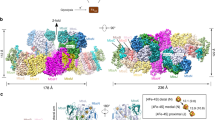Abstract.
Sequences in current databases show that a number of proteins involved in respiratory processes are homologous in archaeal and bacterial species. In particular, terminal oxidases belonging to oxygen, nitrate, sulfate, and sulfur respiratory pathways have been sequenced in members of both domains. They include cytochrome oxidase, nitrate reductase, adenylylsulfate reductase, sulfite reductase, and polysulfide reductase. These proteins can be assigned to the last common ancestor of living organisms assuming that the deepest split of the three domains of life occurred between Archaea and Bacteria and that they were not acquired through lateral gene transfer by one of these domains. These molecular data indicate that several of the most important respiratory pathways arose early in evolution and that the last common ancestor of living organisms was not a simple organism in its energetic metabolism. Rather, it may have been able to gain energy by means of at least four electron transport chains, and therefore it may have been prepared to face a wide range of environmental conditions.
Similar content being viewed by others
Author information
Authors and Affiliations
Rights and permissions
About this article
Cite this article
Castresana, J., Moreira, D. Respiratory Chains in the Last Common Ancestor of Living Organisms. J Mol Evol 49, 453–460 (1999). https://doi.org/10.1007/PL00006568
Issue Date:
DOI: https://doi.org/10.1007/PL00006568




